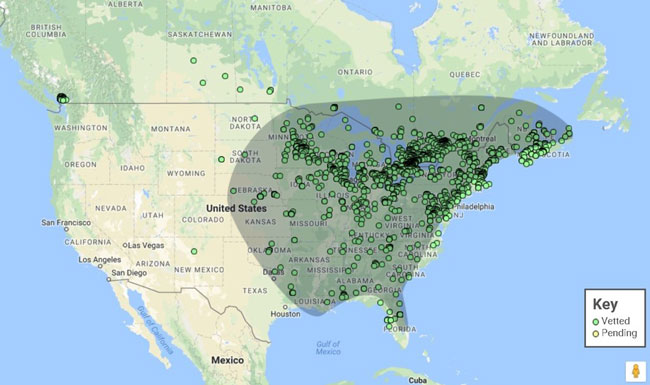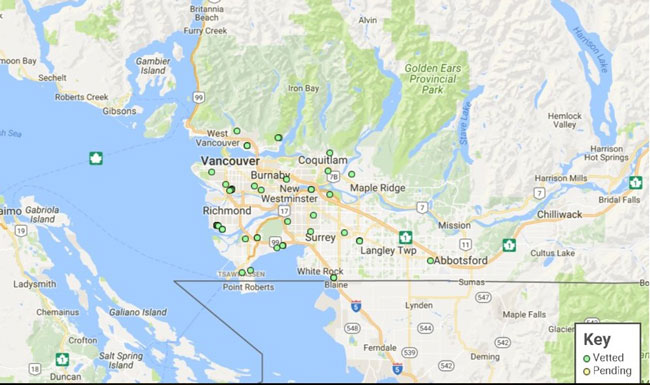While the honey bee is the most common managed crop pollinator, the common Eastern bumble bee (Bombus impatiens) is also managed and used for crop pollination. Bumble bees are the bees responsible for virtually all of our hot house tomatoes, and many other greenhouse crops like sweet peppers. Companies rear bumble bees in captivity and then ship them in boxes to greenhouses upon demand. The bees will leave their nest boxes to go out and visit the crop flowers. However, it is well known that they also will leave the greenhouses through vents and visit flowers in the surrounding landscapes, interacting with wild bees. Past research has shown disease incidence is higher in the wild bumble bees in these areas, spread by the captive-bred bees. Now, Bumble Bee Watch data shows another arising concern.


The only bumble bee species currently available commercially in Canada is the common Eastern bumble bee (Bombus impatiens). It is native to the eastern part of Canada and the United States, yet is shipped throughout the U.S. and southern Canada, including to the West Coast. Concern has been expressed by researchers about the potential for this species to escape captivity. Photos from Bumble Bee Watch confirm that this is happening. Forty-nine unique records submitted by 25 different people in British Columbia show that not only are individual workers and males being found, but in two separate instances photos have been submitted of a queen in the act of mating in close proximity to a greenhouse! They are also being found in residential areas far away from any greenhouses.

It is too early to say if the species will spread beyond the greater Vancouver area or how it will effect other species in the ecosystem, but we are watching it closely. Commercial boxes should not allow queens to escape, but obviously they are getting out, either through the same exit holes that the foraging workers use, or from improper disposal of colonies after they have completed the necessary pollination services.
The number of commercial colonies that get shipped across the continent is unknown as there is no formal tracking or reporting required by the government. There is also no policy or requirements related to how colonies are managed and disposed of. This is something we strongly believe needs to change. Dr. Sheila Colla of York University has submitted the findings from Bumble Bee Watch as expert testimony to the Federal Agriculture Standing Committee on Pollinator Health in Ottawa, Canada, and other researchers are speaking out. Similarly, in the United States, the Xerces Society and other like-minded organizations have been petitioning the government to regulate the movement and health of commercial bumble bees within and amongst states. To date, however, there have been no regulations passed to protect wild bumble bees.



